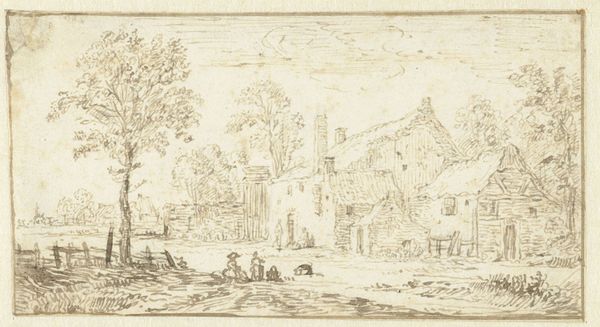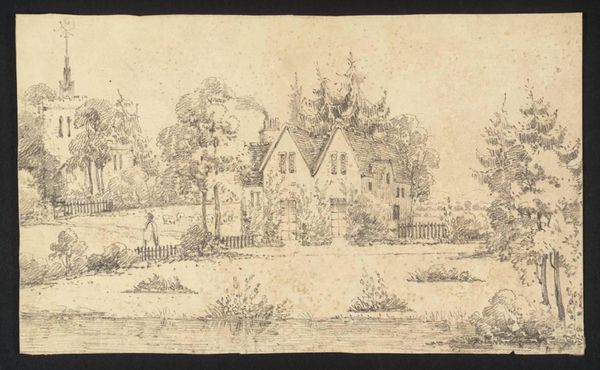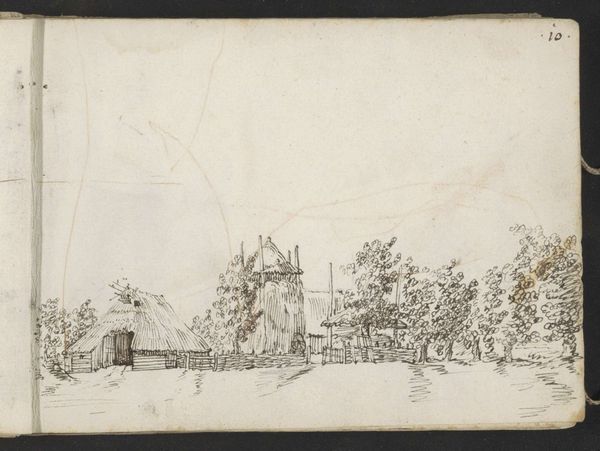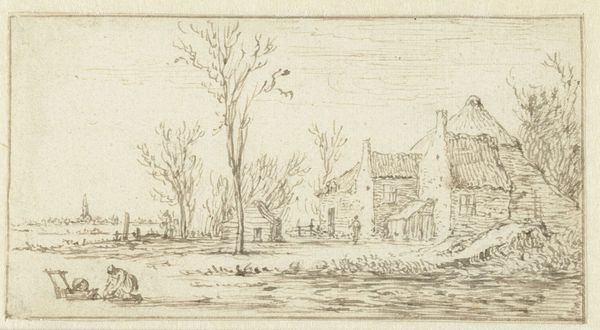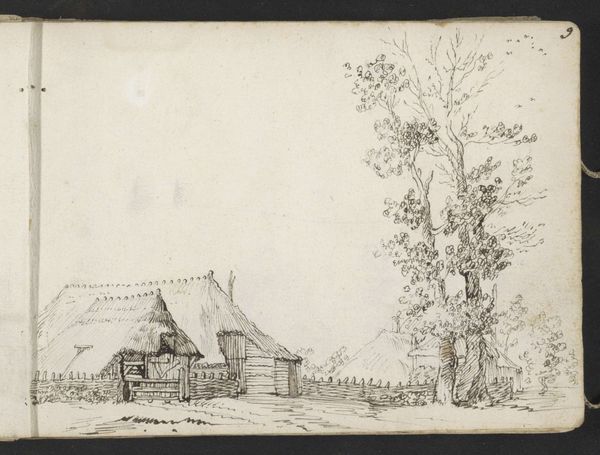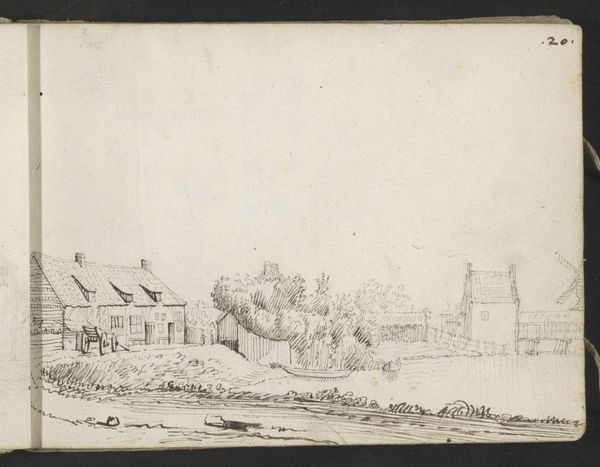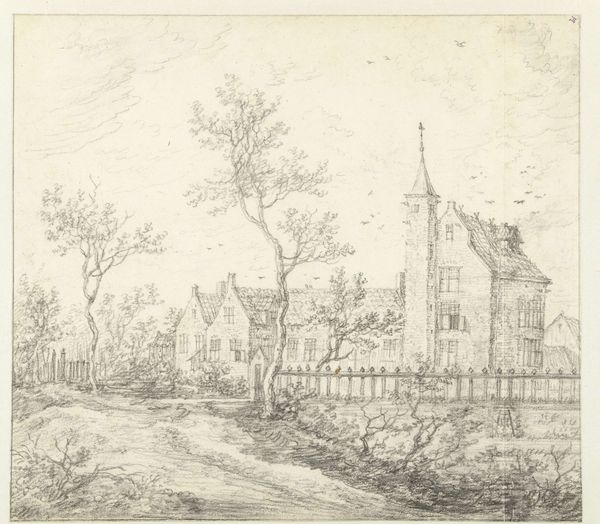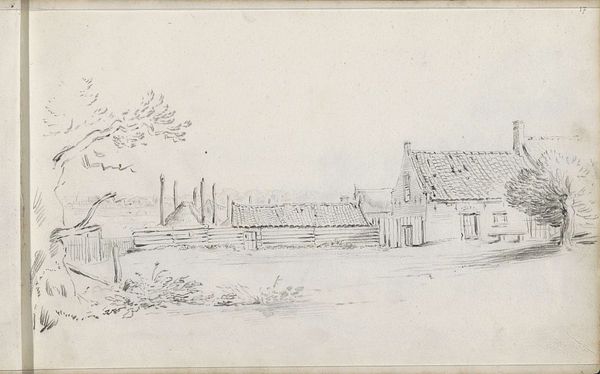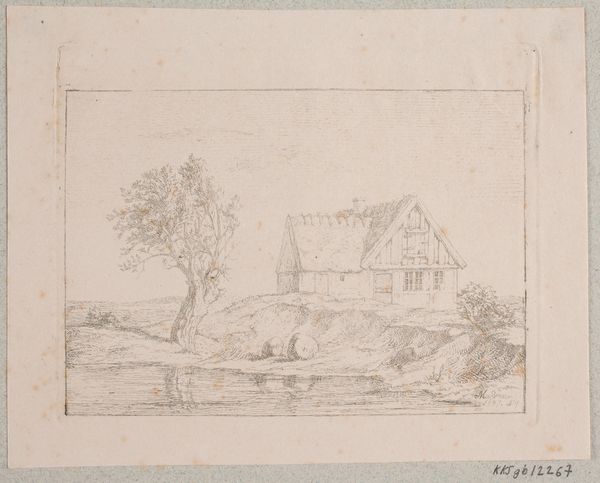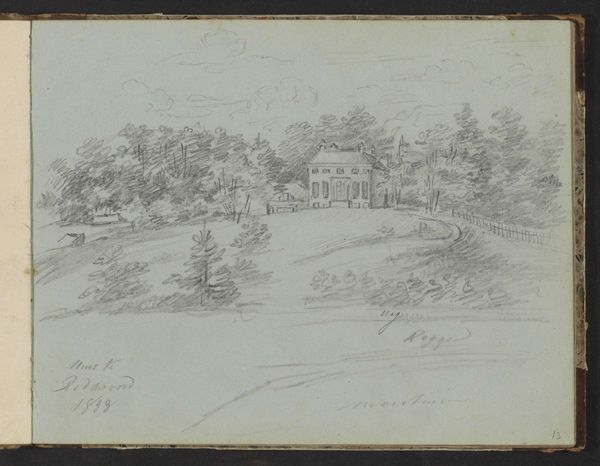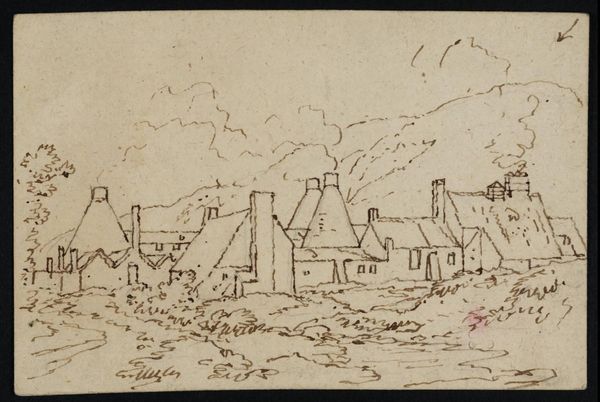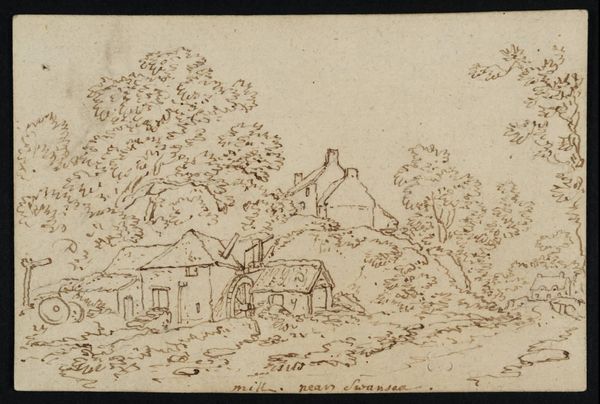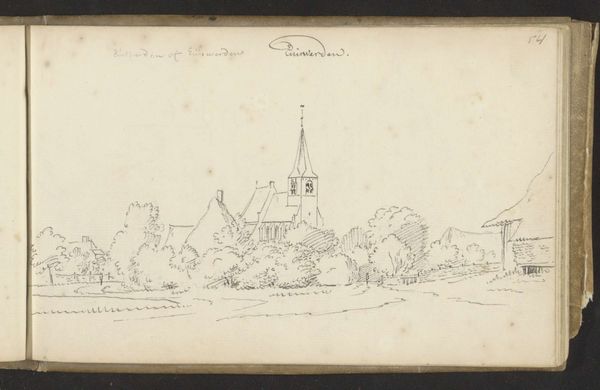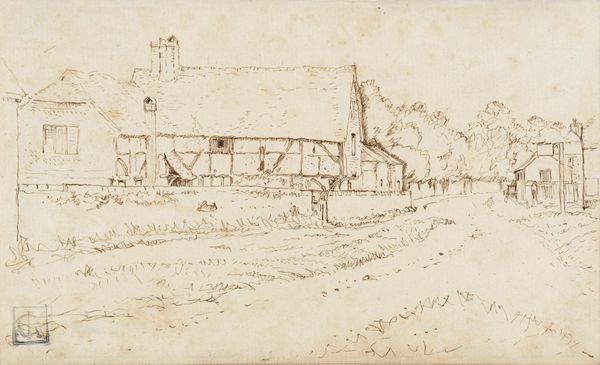
drawing, ink, pen
#
drawing
#
baroque
#
landscape
#
ink
#
pen-ink sketch
#
pen work
#
pen
#
genre-painting
Dimensions: height 105 mm, width 135 mm
Copyright: Rijks Museum: Open Domain
Constantijn Huygens the second made this drawing of the Priory of Chapelle-lez-Herlaimont with pen and brown ink. The choice of materials and the drawing process, where the artist used linear strokes, are essential to the artwork’s appearance. Pen and ink allowed Huygens to depict the architectural and natural details with precision. The ink, likely iron gall, has a warm, sepia tone, that gives the drawing a sense of age and historical depth. The light strokes helped to capture the play of light and shadow on the priory’s facade. Drawings like this were not merely documents, they were exercises of skill, demonstrating the artist's ability to see and record the world around him. Huygens’ technique, rooted in close observation, reflects both the artistic and intellectual values of his time. By focusing on the materials, the method of production, and the social context, we gain a better understanding of the artwork. We can then appreciate the drawing not only as a visual record, but as a product of skillful labor that carries significant cultural and historical value.
Comments
No comments
Be the first to comment and join the conversation on the ultimate creative platform.
